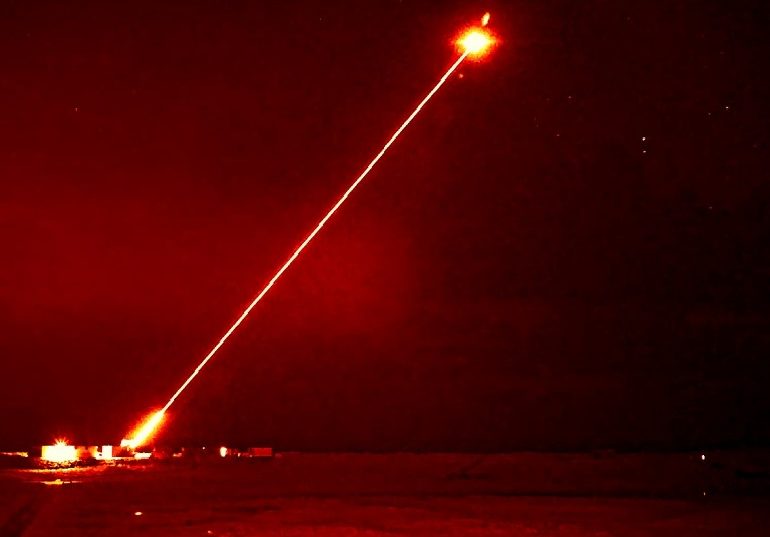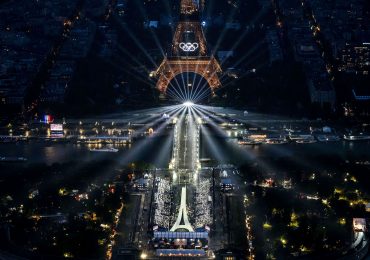A BRITISH laser gun worth £140million has blown up drones in landmark new tests for the space age anti-missile weapon.
The formidable prototype weapon dubbed “DragonFire” was fired at a remote range in Scotland’s outer Hebrides – with each shot costing just £10.
DragonFire laser test in the Hebrides – shooting down dronesMOD/DSTL
Royal Navy ships are now a step closer to being fitted with the high-powered laser weapon. DragonFire
MOD/DSTLThe laser is being developed to shoot down missiles, planes, drones and potentially satellites[/caption]
The gun – designed to shoot down missiles, planes, drones and even satellites with “pin point accuracy” – is running five years behind schedule and has cost over £140 million to develop.
But the Defence Science and Technology Laboratory (DSTL) said it cost just a tenner per shot to fire – meaning millions of pounds could be saved in future conflicts.
Military top brass hope it could replace multi-million pound missiles like the Royal Navy’s Sea Viper system used against Houthi rebel drones and rockets over the Red Sea.
The highly focused laser beam can hit a pound coin from more than a mile away – and it needs to ammunition, using mirrors to focus heat on a specific point.
The DSTL, based in Wiltshire, said it blasts targets at the speed of light.
Its “intense beam of light” can cut through targets and explode missile warheads.
The laser cannon was tested for the first time in November 2022 – as it blasted a drone from over two miles away.
This most recent test
Defence Secretary Grant Shapps dubbed the new laser as “cutting-edge” and said weapons like it will help “revolutionise the battlespace”.
DSTL added: “Firing it for 10 seconds is the cost equivalent of using a regular heater for just an hour and therefore it has the potential to be a long-term low-cost alternative to certain tasks missiles currently carry out.
“The cost of operating the laser is typically less than £10 per shot.”
Its creators had struggled to produce a super-hot laser without burning the gun that fired it.
They also feared that laser has a potentially unlimited range, so could hit aircraft, satellite or space debris when it was fired – but Shapps praised its ability to lower the risk of collateral damage.
He said: “This type of cutting-edge weaponry has the potential to revolutionise the battlespace by reducing the reliance on expensive ammunition, while also lowering the risk of collateral damage.
“Investments with industry partners in advanced technologies like DragonFire are crucial in a highly contested world, helping us maintain the battle-winning edge and keep the nation safe.”
It comes after a Nato military chief warned British troops need to prepare for possible conscription as a war between Putin and Nato looms.
Fears of a third world war are mounting and military experts fear that Britain will have no choice but to put boots on the ground.
During a crunch summit between Nato defence chiefs in Brussels on Thursday, Bauer said: “We need to be readier across the whole spectrum.
“You have to have a system in place to find more people if it comes to war, whether it does or not. Then you talk mobilisation, reservists or conscription.
“We have to realise it’s not a given that we are in peace. And that’s why we [Nato forces] are preparing for a conflict with Russia.”
The Dutch naval officer Bauer’s comments come ahead of Nato’s biggest War Games exercise since the end of the Cold War.
The February operation, “Steadfast Defender”, is set to start next week with 90,000 soldiers flocking to Eastern Europe to prepare for a Russian attack.
It includes around 20,000 British troops with tanks, artillery, fighter jets and helicopters.
The Royal Navy will also send 2,000 sailors across eight warships, two new aircraft carriers and submarines, while 400 Royal Marines will be dispatched to the Arctic Circle.
The RAF’s F-35 lightning attack aircraft will also be tested with conflict scenarios.
Defence Secretary Grant Shapps announced the deployment of all three Armed Forces to the 31-nation drill on Monday.
A drone erupting in flames after it was hit with the Dragon Fire laser from more than two miles away in a 2022 test
The laser’s invisible 50kW beam can hit targets the size of a £1 coin travelling at the speed of sound
The Times20,000 British troops (pictured) are set to join Nato’s biggest call-up in decades next week[/caption]
Leave a comment








